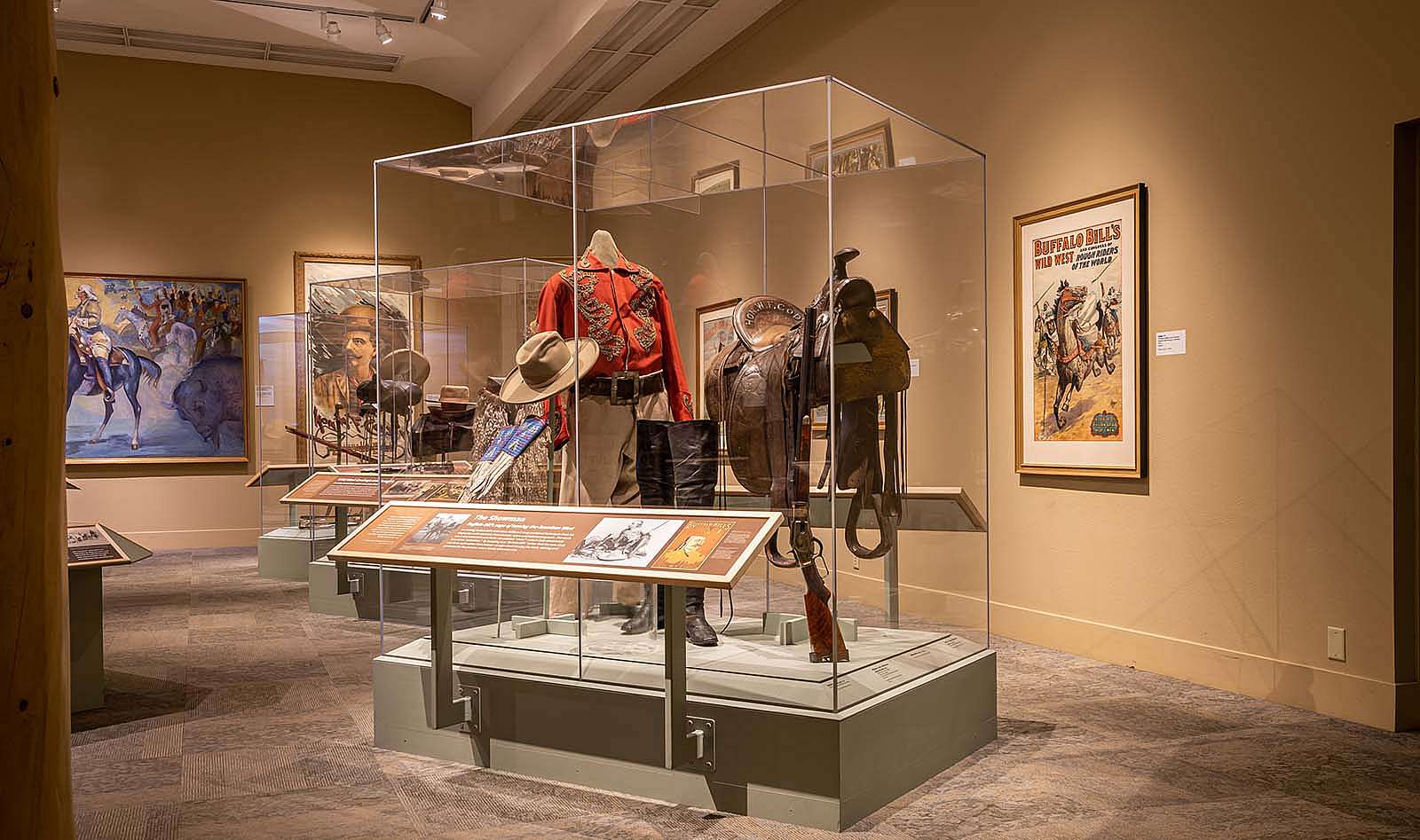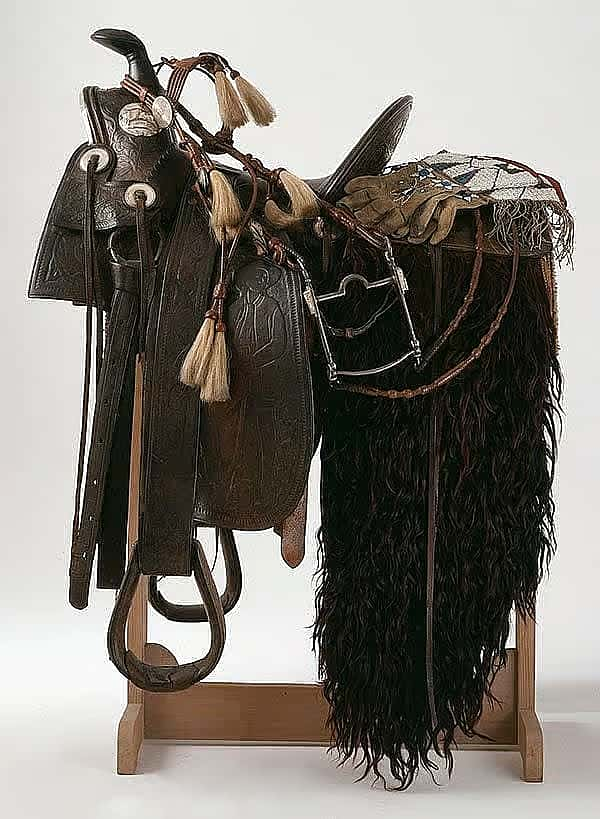Exhibits
Buffalo Bill Museum Exhibits

Few figures loom larger in the story of the American West than Buffalo Bill. More than a century ago, he reigned as the most famous man in the world—arguably the first true international superstar. His image endures: the flowing white hair, distinctive moustache and goatee, buckskins, Stetson hat, and boots that became symbols of a mythic frontier.
During his lifetime, Buffalo Bill introduced millions across the globe to the drama and allure of the American West. Many followed that call, journeying westward themselves; countless others imagined doing so through the spectacles he created. His traveling show, Buffalo Bill’s Wild West, carried the frontier across oceans and continents, shaping how generations imagined America.
The Buffalo Bill Museum brings this legacy to life through authentic artifacts, innovative exhibits, immersive media, and interactive experiences. Visitors encounter not just a legend, but the many sides of William F. Cody—his family roots, his rise as a showman, and his enduring bond with the West he helped define.
Your journey begins at the museum’s entrance, where Buffalo Bill comes alive through video and the performance of Pete Simpson, longtime friend of the Buffalo Bill Center of the West. From there, the museum invites you to rediscover a figure who bridged worlds—East and West, reality and myth, past and present.
Bison and the West
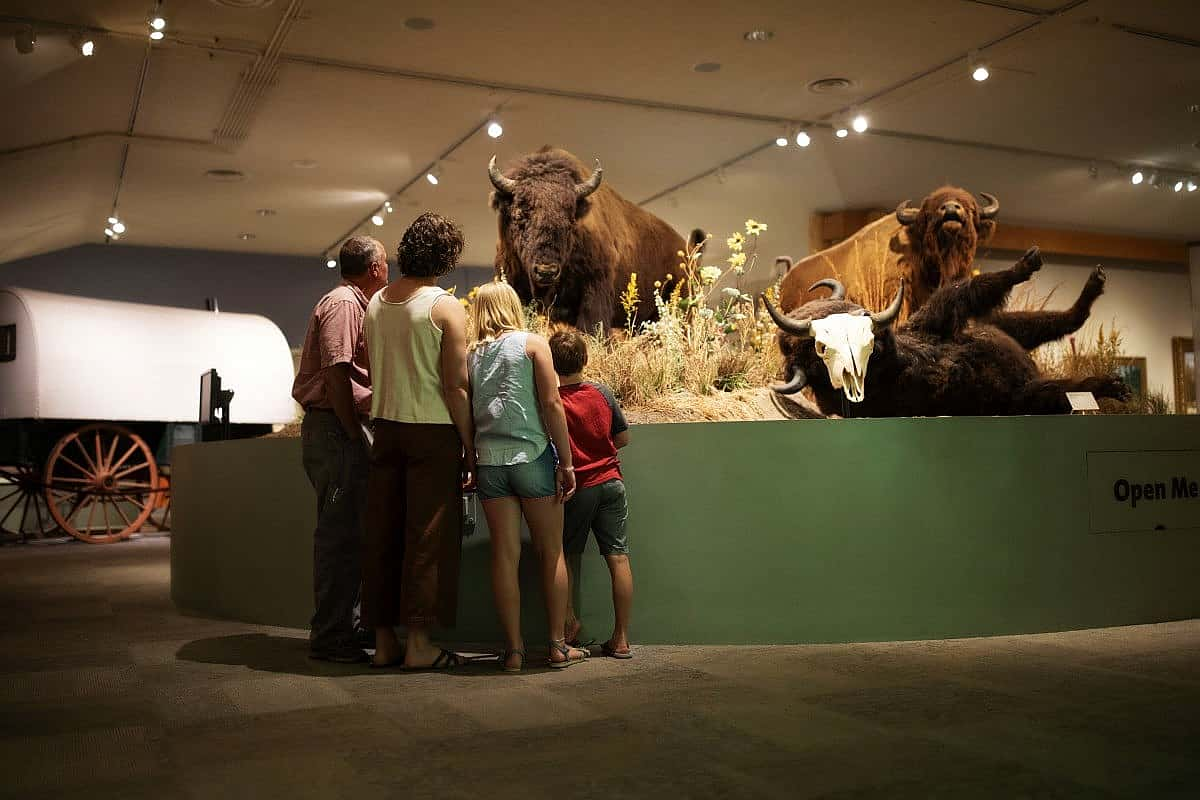
An up-close encounter with a familiar icon of the American West transports visitors back to the mid-nineteenth century, offering an up-close, immersive encounter with bison that roamed the plains of the West where William F. Cody spent his formative years. A wide array of objects and learning stations will surround the Bison and the West exhibit.
Becoming Buffalo Bill
Artifacts and stories illustrate the varied occupations William F. Cody pursued from boyhood to adulthood, explaining how he became “Buffalo Bill,” and tracing how his subsequent experiences helped shape and enhance that persona.
The Family Man
Personal possessions and intimate stories reveal how the self-assured public persona of “Buffalo Bill” masked the turbulence and tragedies of William F. Cody’s domestic life as a husband and father.
Taken around 1872 when they were living in Ft. McPherson, Nebraska, this earliest-known photograph of the Cody family shows William F. Cody and his wife, Louisa Frederici Cody, and their daughter, Arta. P.69.188 (detail)
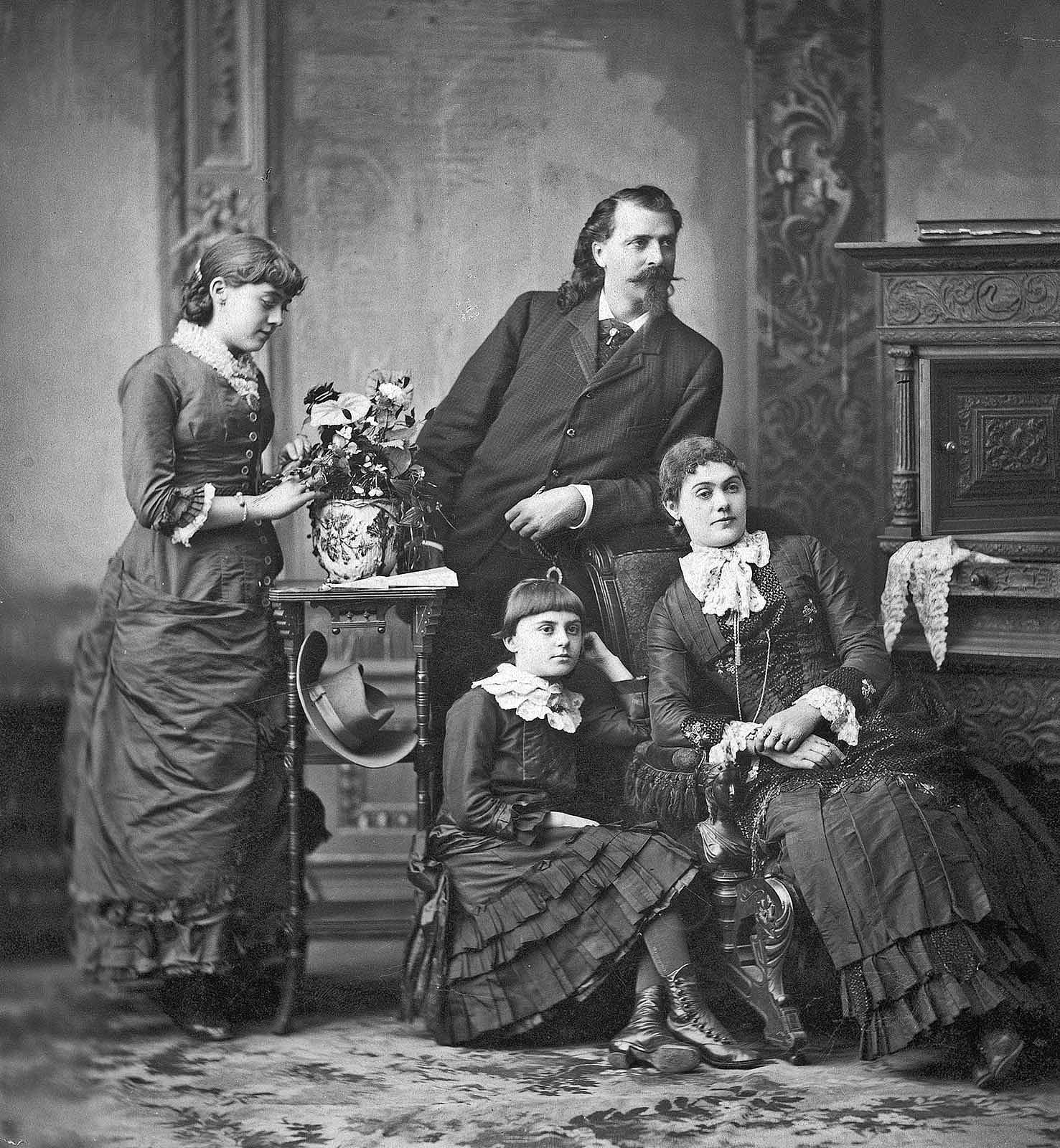
The Rising Star
Interactive exhibits show how dime novels and theatrical stage plays helped make “Buffalo Bill” a nationally-prominent figure and increased public interest in romanticized tales of his exploits in the American West.
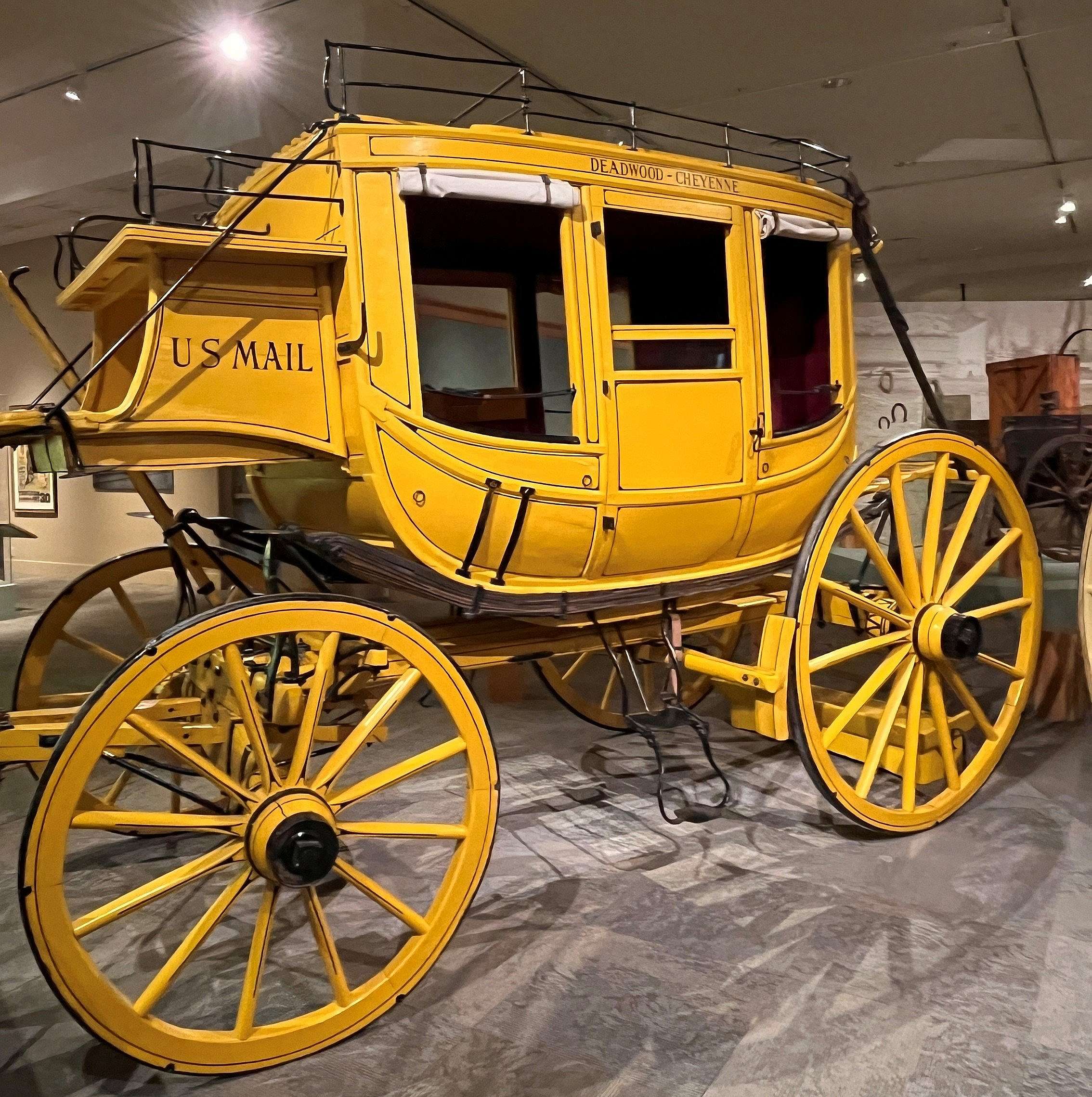
The Deadwood Stagecoach
An old yellow stagecoach in the Buffalo Bill Museum once rumbled across the frontier carrying gold along the Cheyenne–Deadwood Line. Built in 1863 by the Abbot-Downing Company, the “Deadwood Coach” hauled treasure through dangerous country, often under attack, with armed guards riding shotgun to protect its cargo. After a fatal ambush in 1877, the coach was abandoned—until Buffalo Bill Cody discovered and purchased it for his Wild West show. Onstage, it became a centerpiece of dramatized attacks and rescues, thrilling crowds across America and Europe, including Queen Victoria. In 1895, Cody famously drove it through Concord, New Hampshire, before retiring it in 1902. Today, the Deadwood Coach rests in the Buffalo Bill Museum, a vivid relic of both frontier grit and show-business legend.
Buffalo Bill’s Wild West
A scale model of Buffalo Bill’s Wild West, colorful anecdotes, personal artifacts, and archival film footage help reveal how this innovative outdoor entertainment affected those involved and those in the audience.
Window on the West
A wall-sized video screen plays an uplifting and inspirational multimedia presentation offering visitors glimpses of wilderness areas that William F. Cody knew and loved, and giving insights into his relationship with nature.
Cody the Entrepreneur
William F. Cody epitomized the timeless American tale of opportunity and success. As a westerner, he celebrated—and embodied—the values of energy, individualism, honor, and perseverance. As an entrepreneur, he pursued myriad ventures in his effort to climb the ladder of fortune making and losing millions in the process. Despite many setbacks, Cody never lost his optimism nor his idealism.
TE Chuck Wagon
Along with buffalo, and Buffalo Bill himself, few icons better represent the Spirit of the American West than the chuck wagon. It epitomizes the essence of life and work on a cattle ranch—in this instance, Cody’s “TE Ranch.” The wagon, original artifacts, vintage photographs, and first-person stories—along with never- before-seen archival film footage of work and play—will work together to bring Cody’s TE Ranch to life.
Big-Game Hunting
A re-creation of one of William F. Cody’s hunting camps will promote discussion about his lifelong passion for big-game hunting and how it spurred him to become a leader in promoting wildlife conservation. In one of his last, and most famous hunting outings, William F. Cody served as guide and host for His Serene Highness, Prince Albert I of Monaco, on a visit to Wyoming in September 1913.
At Home in the Saddle
Cody’s saddles and tack, along with vivid first-hand accounts, trace his equestrian experiences and reveal the many ways horses shaped his life and legend. They also illuminate the essential roles horses played in the exploration, settlement, and transformation of the American West, from work and travel to sport, performance, and identity. Through these objects and stories, visitors gain a deeper understanding of the powerful bond between horse and rider on the frontier.
